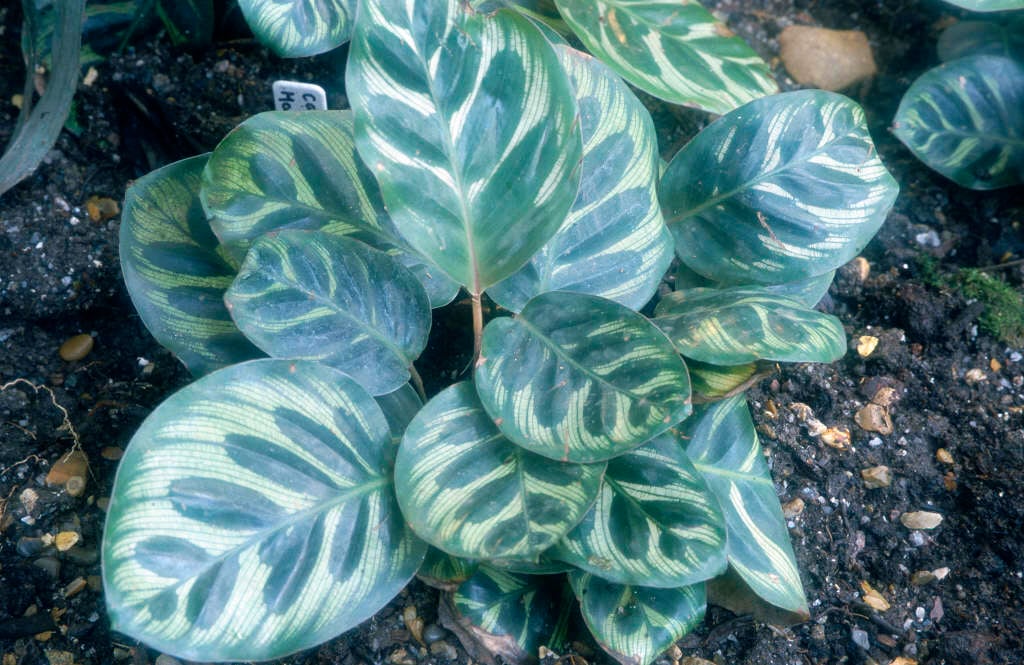Goeppertia makoyana
peacock plant
A clump-forming evergreen perennial, with long-stalked ovate silvery-green leaves, with darker veins and regular dark blotches each side of the midrib, and purple beneath; small purple and white flowers in spikes
Size
Ultimate height
0.1–0.5 metresTime to ultimate height
5–10 yearsUltimate spread
0.1–0.5 metresGrowing conditions
Moisture
Moist but well–drainedpH
Acid, Alkaline, NeutralColour & scent
| Stem | Flower | Foliage | Fruit | |
| Spring | Green Purple | |||
|---|---|---|---|---|
| Summer | Purple White | Green Purple | ||
| Autumn | Green Purple | |||
| Winter | Green Purple |
Position
- Partial shade
Aspect
East–facing or South–facing or West–facing
Exposure
Sheltered Hardiness
H1ABotanical details
- Family
- Marantaceae
- Native to GB / Ireland
- No
- Foliage
- Evergreen
- Habit
- Bushy
- Genus
Goeppertia are evergreen rhizomatous perennials forming clumps of elliptic leaves, often attractively-patterned; racemes of small tubular flowers are seldom produced in cultivation. Previously included within the genus Calathea
- Name status
Correct
- Plant range
- Brazil
How to grow
Cultivation
Grow outdoors in a warm sheltered frost-free area in moist but well-drained soil. Grow under glass in peat-free compost in indirect or filtered light in draught-free condtions. Will tolerate low light levels. Bright light can cause leaf scorch
Propagation
Propagate by division in late spring
Suggested planting locations and garden types
- Sub-tropical
- Patio and container plants
Pruning
No pruning required
Pests
May be susceptible to aphids and glasshouse red spider mite
Diseases
Generally disease-free
Get involved
The Royal Horticultural Society is the UK’s leading gardening charity. We aim to enrich everyone’s life through plants, and make the UK a greener and more beautiful place.
